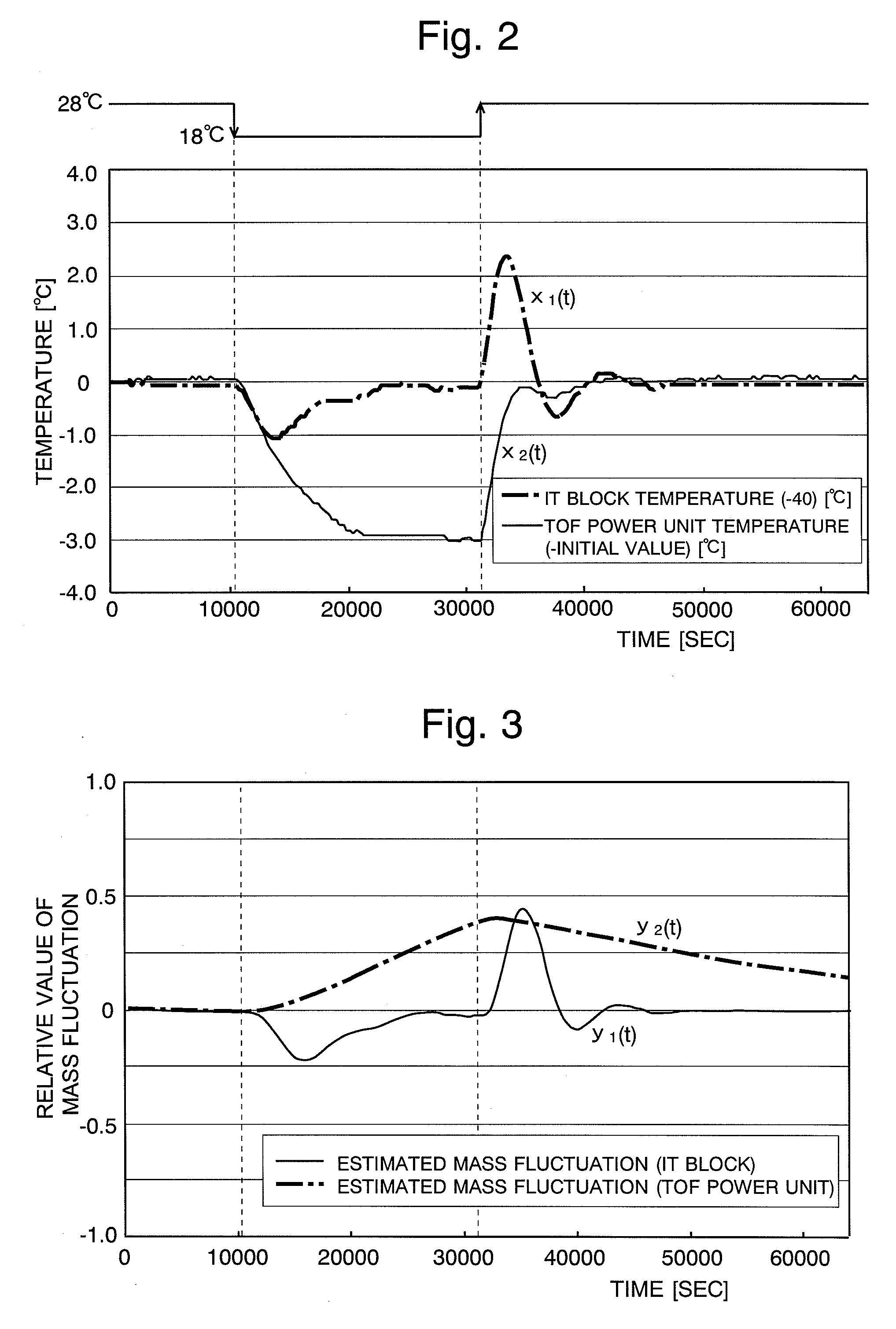Time-of-flight mass spectrometer
a mass spectrometer and time-of-flight technology, applied in the field of time-of-flight mass spectrometers, can solve the problems of shifting the mass axis, the shift of the mass axis may possibly exceed the specified mass accuracy of the apparatus, and the shift etc., to achieve accurate estimation of the shift length of the mass axis of the mass spectrum, high mass accuracy, and high voltage
- Summary
- Abstract
- Description
- Claims
- Application Information
AI Technical Summary
Benefits of technology
Problems solved by technology
Method used
Image
Examples
Embodiment Construction
[0065]A TOFMS, which is an embodiment of the present invention, is hereinafter described with reference to the attached drawings. FIG. 1 is a configuration diagram showing the main components of the TOFMS according to the present embodiment. This TOFMS includes an atmospheric pressure ionization source, an ion trap and a time-of-flight mass analyzer. It can be used, for example, in a liquid chromatograph mass spectrometer (LC / MS) in which a liquid chromatograph connected in the preceding stage.
[0066]A sample liquid containing a target component is sprayed from an electrospray nozzle 1 into an ionization chamber 2 at an approximately atmospheric pressure, whereby ions are produced from the objective component. The resulting ions are sent through a heating pipe 3 into a first intermediate vacuum chamber 4, which is evacuated to a low vacuum state by a rotary pump (not shown). Within the first intermediate vacuum chamber 4, the ions are focused by a first ion lens 5 and sent through a ...
PUM
 Login to View More
Login to View More Abstract
Description
Claims
Application Information
 Login to View More
Login to View More - R&D
- Intellectual Property
- Life Sciences
- Materials
- Tech Scout
- Unparalleled Data Quality
- Higher Quality Content
- 60% Fewer Hallucinations
Browse by: Latest US Patents, China's latest patents, Technical Efficacy Thesaurus, Application Domain, Technology Topic, Popular Technical Reports.
© 2025 PatSnap. All rights reserved.Legal|Privacy policy|Modern Slavery Act Transparency Statement|Sitemap|About US| Contact US: help@patsnap.com



